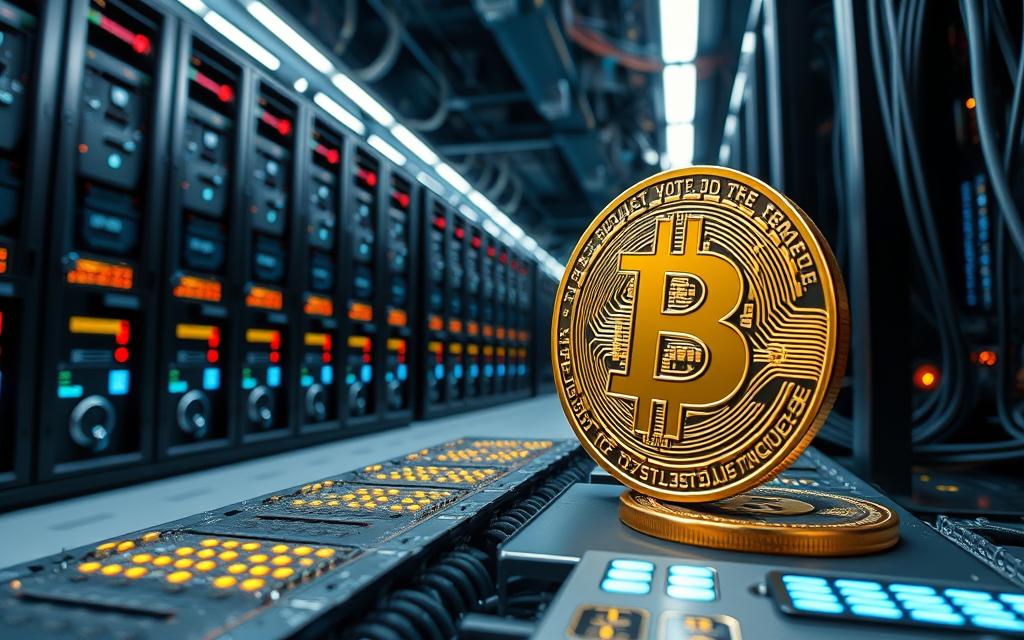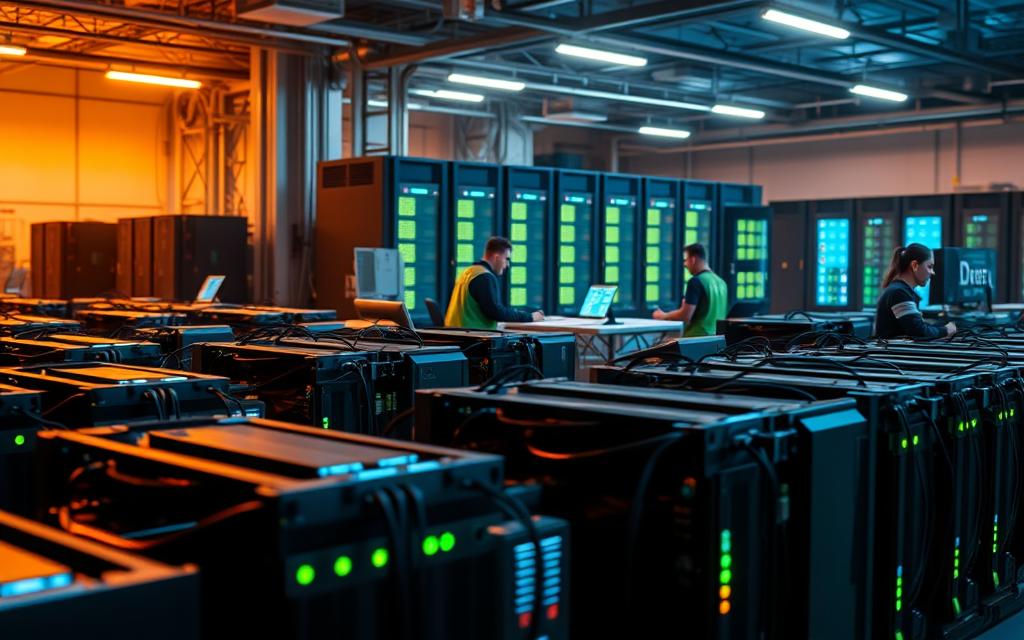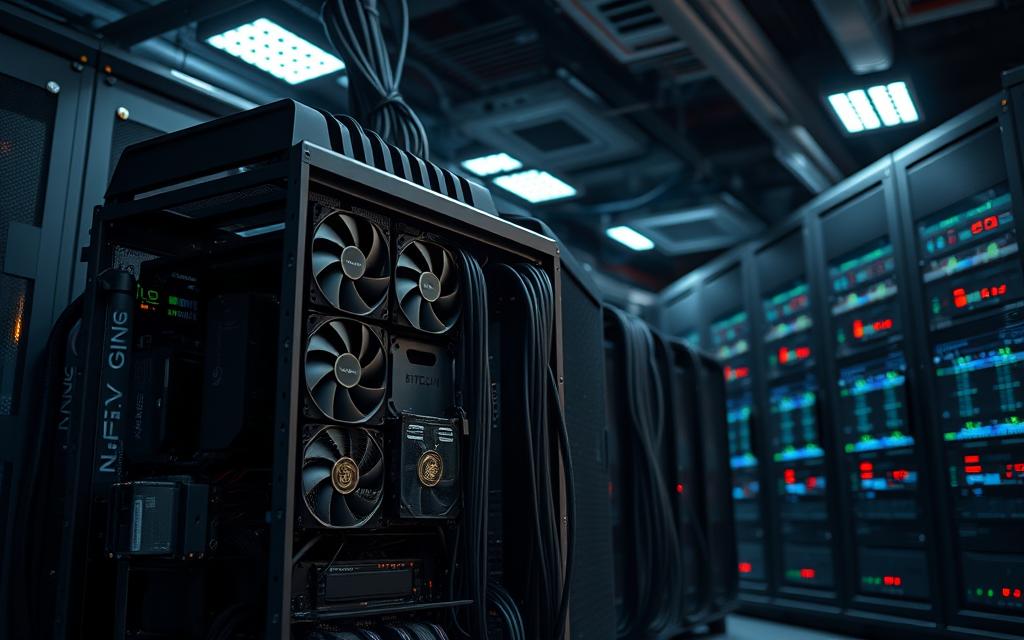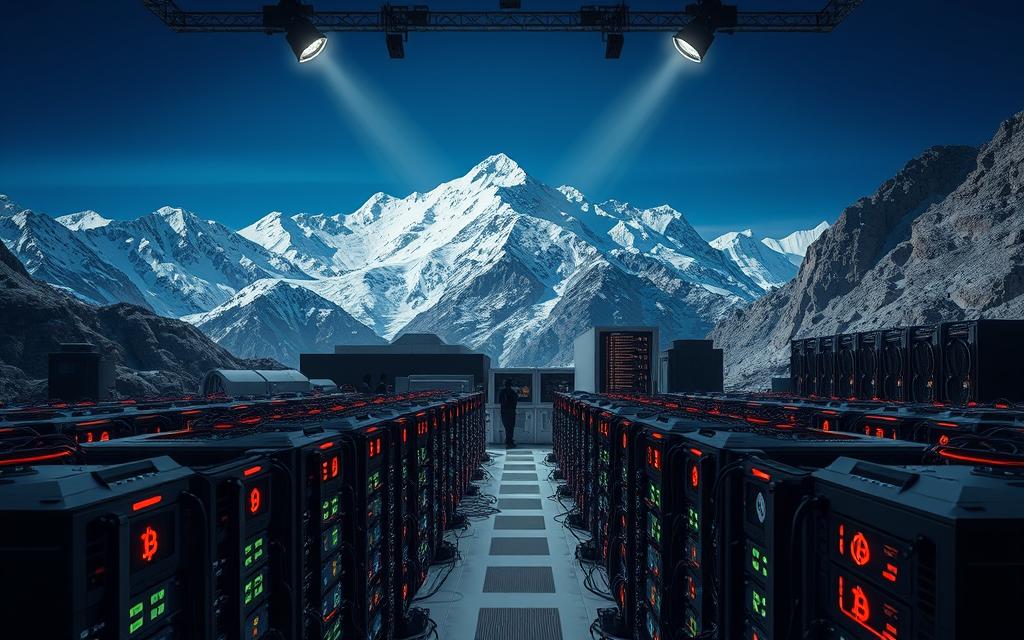Table of Contents
Bitcoin mining is a complex process that involves validating transactions and adding them to the blockchain. Miners compete to solve complex mathematical problems, and the first to solve the problem is rewarded with newly minted Bitcoins. The average time to mine a block is about 10 minutes, but the time it takes to mine 1 Bitcoin can vary significantly.
The mining process is influenced by various factors, including the efficiency of mining hardware, network difficulty, and electricity costs. As the blockchain continues to grow, the difficulty of mining new Bitcoins increases. For more information on the mining process, you can visit Bitdeer’s guide on the topic.
This comprehensive guide will explore the intricacies of Bitcoin mining and provide insights into the realistic timeframes for mining 1 Bitcoin. We’ll examine the impact of the April 2024 Bitcoin halving on mining rewards and profitability calculations.
Understanding Bitcoin Mining Fundamentals
To grasp the concept of bitcoin mining, it’s essential to understand its fundamental principles. Bitcoin mining is a complex process that serves two critical functions: validating transactions on the network and introducing new Bitcoin into circulation.
What Is Bitcoin Mining?
Bitcoin mining involves using powerful computers to solve complex mathematical problems, which helps to secure the blockchain and confirm blocks of transactions. This process is similar to a cashier validating items at a checkout counter. Miners compete to solve these mathematical problems, and the first to solve it gets to add a new block to the blockchain and is rewarded with newly minted Bitcoins.
For more information on bitcoin mining, you can visit https://www.bankrate.com/investing/what-is-bitcoin-mining/.
The Block Reward System
The block reward system is a crucial aspect of bitcoin mining. Miners currently receive 3.125 BTC per block following the April 2024 halving. This reward is known as the block subsidy and is programmed to halve approximately every four years according to the Bitcoin protocol. The block reward incentivizes miners to continue validating transactions and securing the blockchain.
| Event | Block Reward | Date |
|---|---|---|
| Initial Block Reward | 50 BTC | January 2009 |
| First Halving | 25 BTC | November 2012 |
| Second Halving | 12.5 BTC | July 2016 |
| Third Halving | 6.25 BTC | May 2020 |
| Fourth Halving | 3.125 BTC | April 2024 |
The mining difficulty adjusts automatically to maintain a consistent 10-minute block time, regardless of the number of miners participating in the network. This ensures a predictable issuance rate of new Bitcoins.
How Long Does It Take to Mine 1 Bitcoin?
The duration required to mine one bitcoin is influenced by multiple variables, including mining hardware and network difficulty. While the Bitcoin network is designed to produce a new block approximately every 10 minutes, this doesn’t directly translate to the time it takes for an individual miner to mine one bitcoin.

The 10-Minute Block Time Explained
The Bitcoin protocol is designed to mine a new block every 10 minutes, on average. This 10-minute block time is a target rather than a strict rule, as the actual time can vary due to the network’s hashing power and difficulty level. The 10-minute target allows for a relatively stable and predictable issuance of new bitcoins.
Current Block Rewards After the 2024 Halving
As of the 2024 halving, the block reward for mining a block is 3.125 bitcoins. This reward, also known as the block subsidy, is what motivates miners to secure the network and validate transactions. The halving event, which occurs approximately every four years, reduces the block reward by half, thereby controlling the total supply of bitcoin.
Realistic Timeframes for Individual Miners
For an individual miner using a single Application-Specific Integrated Circuit (ASIC), the time it takes to mine one bitcoin can be quite lengthy. Given the current network difficulty and the competitive landscape of Bitcoin mining, it is realistic to expect that mining one bitcoin solo could take many years, if not decades. This is because the hashing power of a single ASIC, although powerful, is dwarfed by the collective hashing power of the entire network. As a result, most miners join mining pools to increase their chances of earning bitcoin rewards, albeit smaller and more frequent.
Mining pools allow miners to combine their hashing power, increasing the likelihood of solving the complex mathematical equations required to mine a block. While the reward is split among pool members, it provides a more consistent income stream compared to solo mining.
Key Factors Affecting Bitcoin Mining Time
The time it takes to mine 1 bitcoin is influenced by several critical factors. Understanding these elements is crucial for miners to optimize their operations and maximize profitability.
Mining Hardware Efficiency
Mining hardware efficiency plays a significant role in determining how long it takes to mine bitcoin. The hash rate of mining equipment, measured in hashes per second (H/s), directly impacts a miner’s ability to solve complex mathematical equations required to validate transactions and mine new bitcoins. Modern Application-Specific Integrated Circuit (ASIC) miners, such as the Antminer S19 Pro, offer significantly higher hash rates compared to older models, thus improving mining efficiency.
Network Hash Rate and Difficulty
The total hash rate of the Bitcoin network, currently around 600 EH/s, creates a competitive environment among miners. An individual miner’s hash rate is a fraction of the total network hash rate, making it challenging to mine bitcoin solo. The Bitcoin network’s difficulty adjustment mechanism ensures that new blocks are created approximately every 10 minutes, regardless of the total hash rate. This mechanism adjusts the difficulty level every 2016 blocks, or roughly every two weeks.
Electricity Costs and Availability
Electricity costs and availability significantly impact mining profitability and sustainability. Regions with low-cost power attract large mining operations due to the reduced operational expenses. Miners must consider the cost of electricity when calculating their potential revenue from mining bitcoin.
Bitcoin’s Difficulty Adjustment Mechanism
Bitcoin’s difficulty adjustment mechanism is a crucial component of the network’s security and stability. By adjusting the difficulty level every 2016 blocks, the network maintains a consistent block time of approximately 10 minutes. This mechanism ensures that the network remains resilient to changes in the total hash rate, providing a stable environment for miners.
In conclusion, the time it takes to mine 1 bitcoin is determined by a combination of factors, including mining hardware efficiency, network hash rate and difficulty, electricity costs, and the Bitcoin network’s difficulty adjustment mechanism. Understanding these factors is essential for miners to optimize their operations and remain competitive in the ever-evolving bitcoin mining landscape.
Solo Mining vs. Mining Pools
Solo mining Bitcoin is a daunting task due to the global competition. As the network grows, the difficulty of mining increases, making it even more challenging for individual miners to successfully mine a block.
The Challenges of Solo Mining
Solo mining involves one miner competing against every other miner globally. The chances of a solo miner beating the rest of the world to a block’s target hash are nearly zero, regardless of their mining rigs’ power or choice of Bitcoin mining software. This makes solo mining virtually impossible for those seeking to mine one Bitcoin in a reasonable timeframe.
The statistical probability of a solo miner successfully mining a block is extremely low. Even miners with substantial equipment typically join mining pools to increase their chances of earning rewards via the Bitcoin mining process.
Types of Mining Pools and Their Benefits
Mining pools offer a more predictable income stream compared to the lottery-like nature of solo mining. Different Bitcoin mining pools include:
- Proportional pools, which distribute rewards based on a miner’s hashrate contribution.
- Pay-per-last-N-shares pools, which distribute miners into shifts.
- Pay-per-share pools, which provide miners with a fixed income.
Here’s a comparison of the different mining pool types:
| Mining Pool Type | Reward Distribution | Benefits |
|---|---|---|
| Proportional | Based on hashrate contribution | Fair distribution of rewards |
| Pay-per-last-N-shares | Distributes miners into shifts | Reduces variance in rewards |
| Pay-per-share | Fixed income | Predictable earnings |
By joining a mining pool, miners can receive smaller but more consistent payments. This approach has become the standard for most miners, providing a more stable income stream compared to solo mining.

Optimizing Your Bitcoin Mining Setup
The key to successful Bitcoin mining lies in optimizing your equipment for maximum efficiency and profitability. This involves a combination of the right hardware, efficient energy use, and strategic planning.
Choosing the Right Mining Hardware
When it comes to Bitcoin mining, the most efficient hardware is an Application-Specific Integrated Circuit (ASIC) miner. Unlike CPUs and GPUs, ASICs are designed specifically for Bitcoin mining, offering significantly faster and more effective performance. Although they come with a higher initial cost, their efficiency makes them the industry standard.
Calculating Mining Profitability
To determine whether your mining operation is profitable, you need to calculate your revenue against your costs. Factors to consider include hardware costs, electricity rates, mining difficulty, and the current Bitcoin price. A detailed calculation will help you understand whether your mining rig is profitable or not.
| Factor | Description | Impact on Profitability |
|---|---|---|
| Hardware Costs | Initial investment in mining equipment | High upfront cost |
| Electricity Rates | Ongoing cost of electricity to power mining rigs | Significant ongoing expense |
| Mining Difficulty | Measure of how hard it is to mine a new block | Affects revenue; higher difficulty means less revenue |
| Bitcoin Price | Current market price of Bitcoin | Directly affects revenue; higher price means more revenue |
Energy Efficiency Considerations
Energy efficiency is crucial for profitable Bitcoin mining. The power consumption of your mining rig directly impacts your profitability. To optimize for lower energy costs, consider using energy-efficient hardware and exploring cheaper electricity sources.

By focusing on these key areas, you can optimize your Bitcoin mining setup to reduce costs and increase profitability. As the mining landscape continues to evolve, staying informed and adapting your strategy will be crucial to success.
Conclusion: Is Mining 1 Bitcoin Worth the Time?
With the Bitcoin network continually evolving, miners must adapt to changing conditions that affect their rewards. The time it takes to mine one bitcoin is influenced by factors such as the block reward system, halving events, and mining difficulty. As the network approaches the total supply of 21 million bitcoins, transaction fees will become the primary incentive for miners. For individual miners, joining a mining pool can help mitigate the uncertainty of revenue. Whether mining one bitcoin is worth the time investment depends on the cost of equipment, electricity, and the current block reward. As the Bitcoin ecosystem matures, miners must weigh the costs against the potential rewards of mining versus purchasing bitcoin directly.
FAQ
What is the average time it takes to mine one Bitcoin?
The average time to mine one Bitcoin is influenced by several factors, including the mining hardware used, the network hash rate, and the block reward. Currently, it can take around four years to mine one Bitcoin at the current block reward rate and network difficulty.
How does the Bitcoin network adjust its difficulty?
The Bitcoin network adjusts its difficulty every 2016 blocks, or approximately every two weeks, to maintain a consistent block time of around 10 minutes. This adjustment ensures that the network remains secure and that the block reward is distributed fairly among miners.
What is the difference between solo mining and mining pools?
Solo mining involves individual miners competing to solve complex mathematical equations to validate transactions and earn the block reward. In contrast, mining pools allow multiple miners to combine their computing power to increase their chances of solving these equations and sharing the rewards.
How do transaction fees impact Bitcoin mining?
Transaction fees play a crucial role in Bitcoin mining, as they provide an additional source of income for miners beyond the block reward. As the block reward decreases over time due to halving, transaction fees will become an increasingly important factor in determining the profitability of mining operations.
What is the impact of electricity costs on Bitcoin mining?
Electricity costs are a significant factor in determining the profitability of Bitcoin mining. Miners must consider the cost of energy required to power their mining rigs and ensure that their operations are energy-efficient to remain competitive.
How does the block reward halving affect Bitcoin mining?
The block reward halving, which occurs every four years, reduces the number of new Bitcoins awarded to miners for validating transactions. This reduction can impact the profitability of mining operations and may lead to changes in the network hash rate and mining difficulty.









